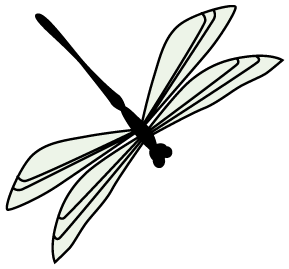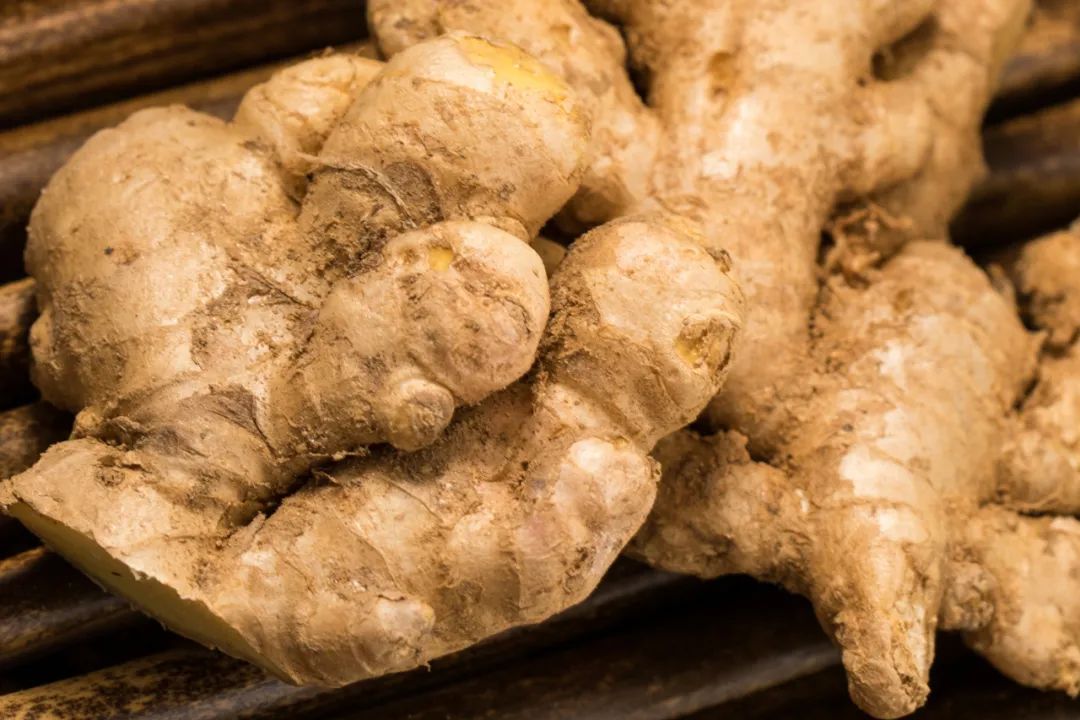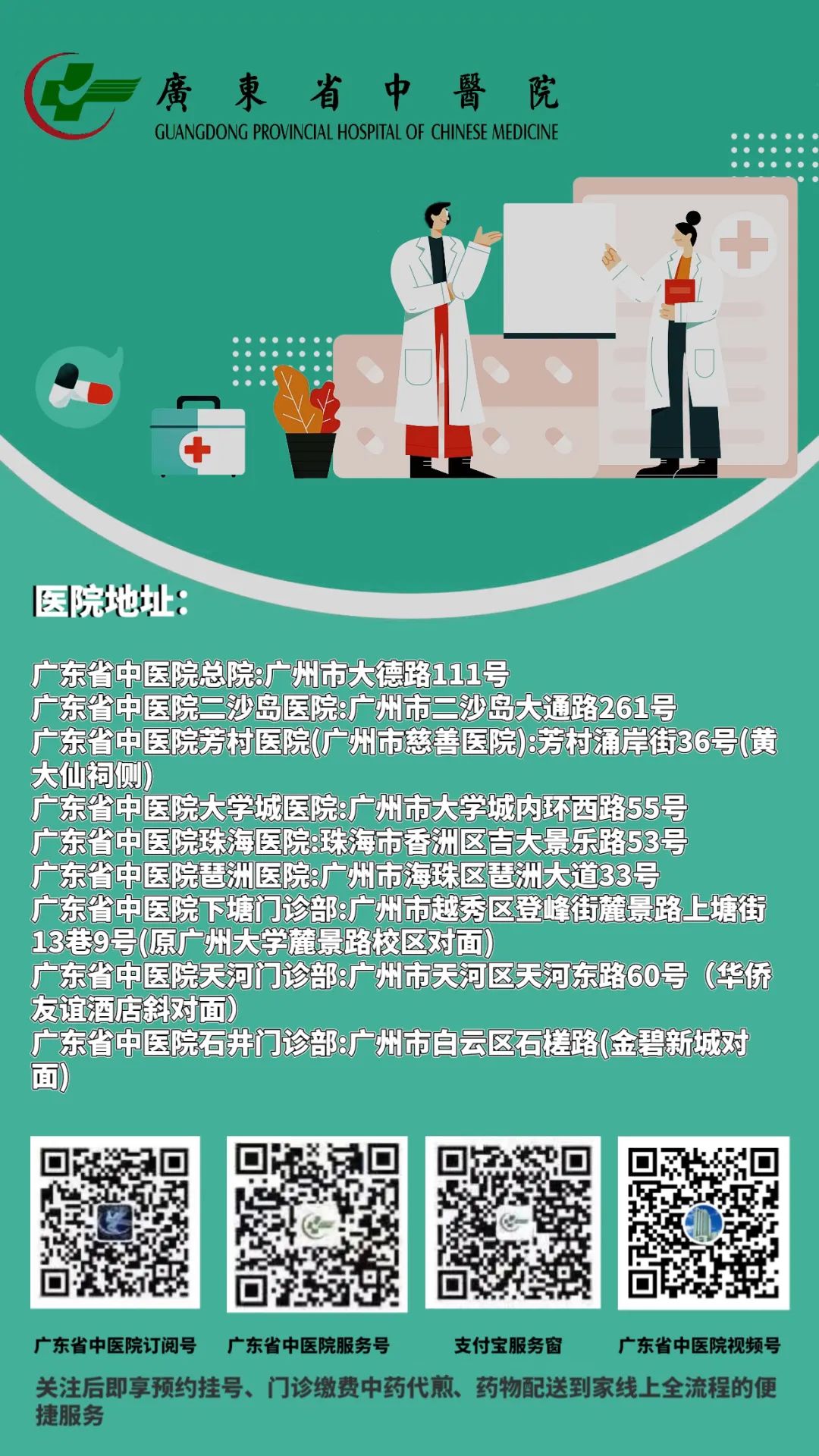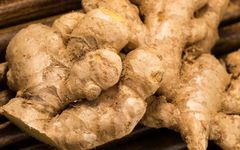


TCM Lecture Series
The “Understanding the Flavors of Herbs” column is jointly launched by the Guangdong Provincial Hospital of Traditional Chinese Medicine and Guangzhou News Radio, broadcasted on the “Guangdong Provincial Hospital of Traditional Chinese Medicine” WeChat account and on Guangzhou News Radio FM962 (every Saturday at 16:30) during the “Weekend Health Class” program.
This column is supported by the Pharmacy Department of Guangdong Provincial Hospital of Traditional Chinese Medicine!
Please pay attention!
Host:When it comes to fresh ginger (Sheng Jiang), everyone is very familiar with it; it is an essential condiment in almost every household. But did you know that it is also an important medicinal herb? In traditional Chinese medicine (TCM), we differentiate between fresh ginger (Sheng Jiang), dried ginger (Gan Jiang), and galangal (Gao Liang Jiang). What are the differences among them? In this episode of “Understanding the Flavors of Herbs,” Pengpeng invites Liu Zhenhua, a TCM pharmacist from the Pharmacy Department of Guangdong Provincial Hospital of Traditional Chinese Medicine, to discuss the distinctions among these three types of ginger.

Liu Zhenhua:When we talk about fresh ginger, many people are familiar with it, especially those who love to cook. It is an indispensable helper in the kitchen; adding a few slices of fresh ginger when steaming fish can effectively eliminate the fishy smell and enhance the flavor of the fish. Fresh ginger can also be consumed as a vegetable, and many people enjoy its unique spicy and aromatic flavor, which has a good appetite-stimulating effect.As a TCM pharmacist, I would like to emphasize its medicinal value. Fresh ginger is often used as a medicinal guide, commonly paired with jujube (Da Zao) when preparing herbal decoctions, adding a few slices of fresh ginger and two jujubes to tonify the spleen and stomach, harmonize various herbs, promote the absorption of medicinal properties, and enhance efficacy. Fresh ginger is pungent and slightly warm, capable of dispersing wind-cold, and is often combined with Ma Huang (Ephedra), Gui Zhi (Cinnamon Twig), and Zi Su Ye (Perilla Leaf) to treat wind-cold colds, inducing sweating and relieving the exterior. Chopped fresh ginger boiled with an appropriate amount of brown sugar to make a hot drink, commonly known as brown sugar ginger water, can be used for wind-cold colds, stomach cold pain, and women’s lower abdominal cold pain during menstruation. Additionally, fresh ginger has a harmonizing effect on the stomach and can be used for various types of vomiting.What about dried ginger (Gan Jiang)? As the name suggests, it is made by drying or roasting fresh ginger. It can both “disperse” to eliminate internal cold and “conserve” to assist yang, hence it is said to be “able to disperse and conserve.” It is commonly used for spleen and stomach cold syndromes, applicable for both external cold invasion and deficiency of yang qi. It is often paired with Ren Shen (Ginseng) and Bai Zhu (White Atractylodes) to treat spleen and stomach deficiency cold; a classic TCM formula called “Si Ni Tang” includes dried ginger paired with Fu Zi (Aconite) to rescue yang from reversal, which not only enhances the effect of Fu Zi but also reduces its toxicity, hence the saying “Fu Zi cannot be heated without dried ginger.”Dried ginger slices can be stir-fried with sand until they puff up, which is known as Pao Jiang (Puffed Ginger). Pao Jiang has no dispersing effect and is specifically used to stabilize the middle jiao, stopping bleeding and diarrhea, hence it is said to “conserve and not disperse.” It is mainly used for deficiency-type bleeding and cold-type diarrhea, often combined with Ce Bai Ye (Platycladus) and Ai Ye (Mugwort) to treat yang deficiency bleeding; paired with Bai Zhu to treat cold-type diarrhea. Pao Jiang also has the effect of warming the meridians and alleviating pain.When dried ginger is stir-fried until the surface is charred and the inside is brown, it is known as Jiang Tan (Ginger Charcoal), which can be understood as Pao Jiang further roasted until charred. Jiang Tan is specifically used for various types of deficiency-cold bleeding.Additionally, ginger peel is the dried outer skin of ginger, often combined with Fu Ling Pi (Poria Peel), Sang Bai Pi (Mulberry Bark), and Da Fu Pi (Trichosanthes Peel) to treat various types of edema, promoting diuresis and reducing swelling.As you can see, a single type of ginger can be processed into many different products, each with distinct effects, allowing doctors to choose based on the patient’s condition. This truly reflects the profound depth of TCM.The host also mentioned galangal (Gao Liang Jiang), which is different from the ginger we usually refer to; it is the rhizome of the ginger family plant, galangal. Galangal is one of the top ten famous herbs in Guangdong, primarily produced in Xuwen, Suixi, and Lianjiang, especially with a large yield and high quality in Xuwen County, known as the “Hometown of Galangal.” Its effects include warming the stomach and stopping vomiting, dispersing cold and alleviating pain, used for cold abdominal pain and cold vomiting. It is generally used for medicinal purposes but can also be used as a spice for marinating meat, which tastes quite good.Alright, that concludes today’s program. See you next time!Liu Zhenhua

TCM Pharmacist of Guangdong Provincial Hospital
-
Understanding the Flavors of Herbs | The “Durian” of Wild Vegetables, Smelling Bad but Tasting Sweet, Can Clear Heat, Detoxify, and Discharge Pus—Patrinia
-
Understanding the Flavors of Herbs | Heat-Clearing and Detoxifying TCM—Wood Butterfly
-
Understanding the Flavors of Herbs | The “King of Zinc” in Plants, with Excellent Antioxidant Ability—Water Shield

Executive Editor: Zhu Xinyou Tian
Proofreader: Zhuang Yingge
Editor: Song Liping




